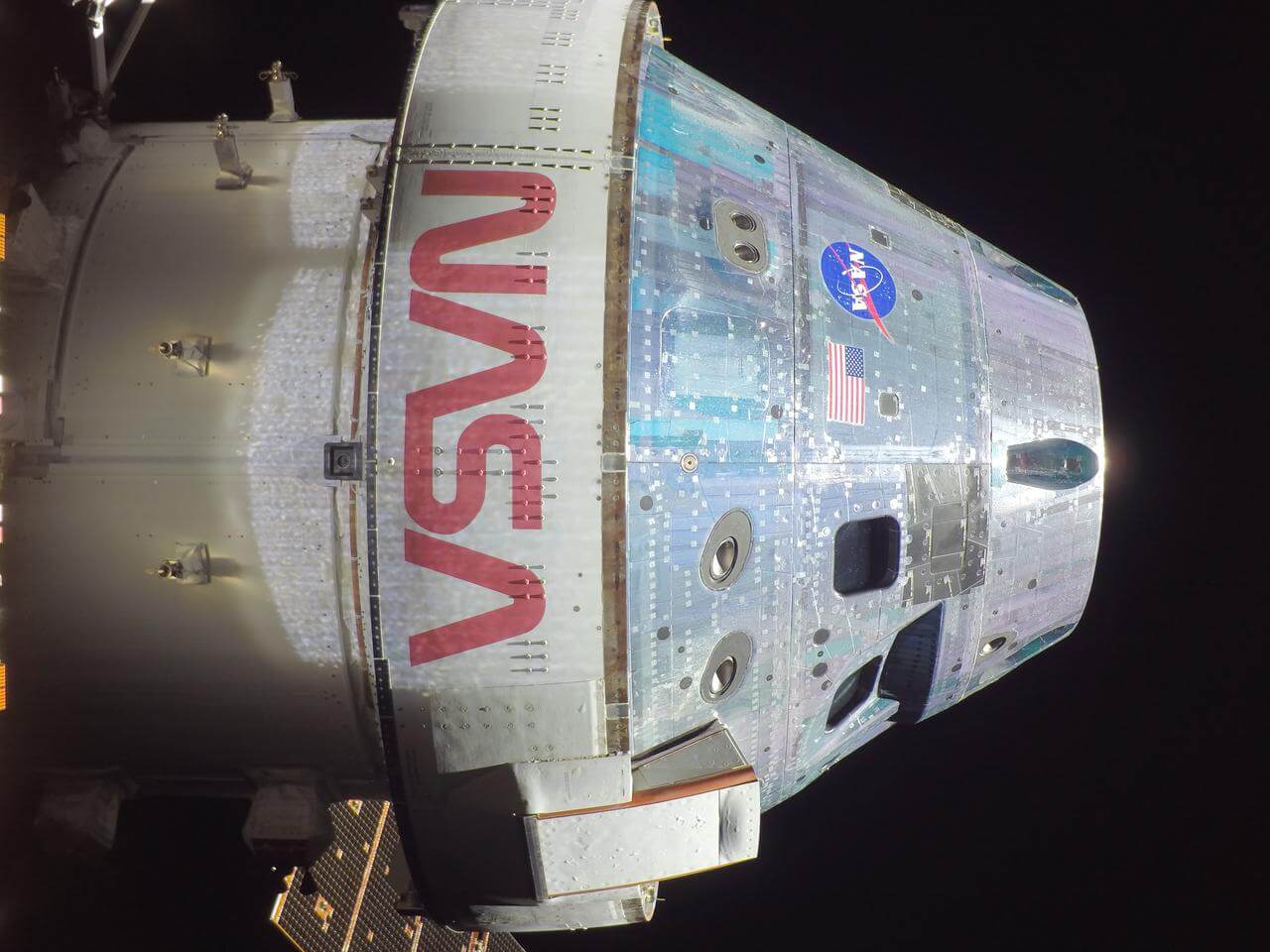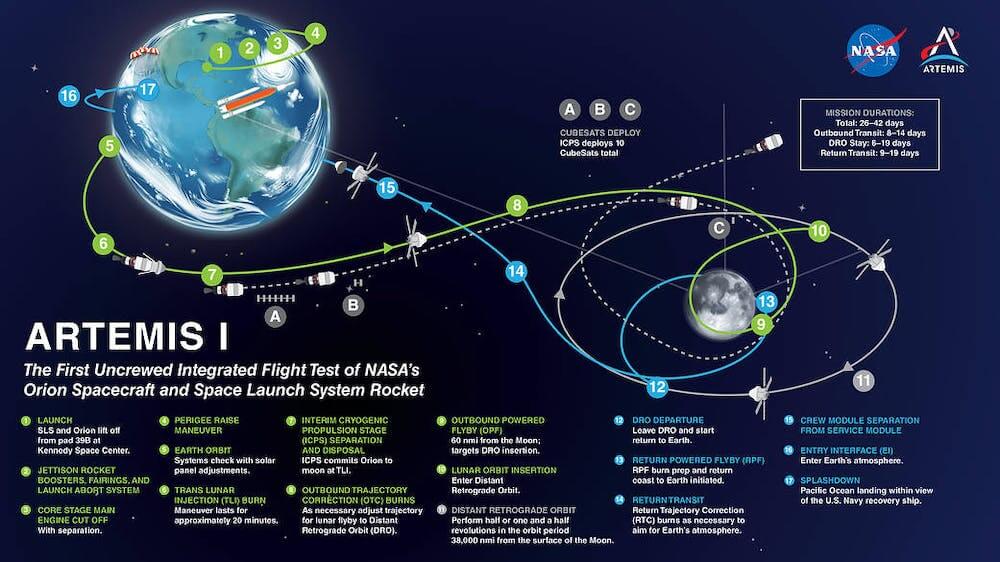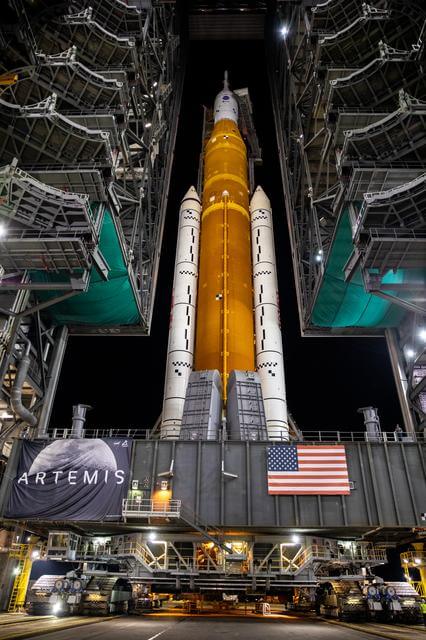An astronomer explains what to expect and why it's important and how technological developments in the last 50 years have made the moon a much more accessible place
By Jack Burns, Professor of Astrophysics and Planetary Sciences, University of Colorado Boulder

NASA's SLS (space launch system) launcher took off from the Kennedy Space Center in Cape Canaveral, Florida, on November 16, 2022. The rocket carried the Orion crew capsule as the highlight of the mission Artemis 1.
This time it's a harrowing voyage to the moon with no people on board. Mission engineers will test how the Orion crew capsule holds up in space. The mission is an important step towards returning humans to the moon A break of half a century. The launch was initially planned for the morning of August 29, 2022, but was postponed Three times, twice for technical reasons (fuel leaks) and once because of Hurricane Ian.
The spacecraft is supposed to fly to the moon, deploy several small satellites in orbit around it, and then place itself in orbit. NASA aims to practice operating the spacecraft, test the conditions the crews will experience on and around the moon, and ensure that the spacecraft and all its future passengers can safely return to Earth.
The website 'The Conversation' asked From Jack Burns, professor and space scientist at the University of Colorado Boulder and a former member of NASA's Presidential Transition Team, to describe the mission, explain what the Artemis program promises to do for space exploration, and tell how the space program has changed in the half century since humans last set foot on the moon.

How is Artemis 1 different from the other rockets launched routinely?
Artemis 1 is the first flight of space launch system the new This is a "heavy" vehicle, as NASA refers to it. This is the most powerful rocket engine ever flown into space, even more powerful than a system Apollo's Saturn V which flew astronauts to the moon in the 60s and 70s.
It is a new type of rocket system, as it has both a combination of liquid oxygen and hydrogen main engines and two solid rocket boosters derived from in the space shuttles. It's basically a cross between the space shuttle and a rocket Saturn V of Apollo.
These tests are important because Orion's crew capsule Going to experience the real space in the space environment of the moon which is characterized by high radiation, for a month. It is very important that the engineers check the the heat shield, which protects the capsule and its occupants, when it returns to Earth at a speed of 40,000 km/h. This will be the fastest entry of a capsule into the atmosphere since Apollo, so it is very important that the heat shield functions well.
This mission also carries a series of small satellites that will be placed in orbit around the moon. These will provide some useful information, from looking further into the permanently shadowed craters where scientists think there is water, to further measurements of the radiation environment to see what the effects of long-term exposure would be on humans.
The plan is for Artemis 1 to lift off, travel to the moon, deploy satellites, orbit the moon, return to Earth, safely re-enter the atmosphere and splash around in the ocean. Infographic, NASA
What is the purpose of Project Artemis? What is expected in the series of launches?
Artemis 1 is a first step towards Artemis 3, which will be the first manned mission to the moon in the 21st and first century Since 1972. Artemis 1 is an unmanned test flight.
Artemis 2, which should be launched in a few years, will have astronauts on board but they will not land. It will be a lunar orbiting mission like Artemis 1 and very similar to Apollo 8, which circled the moon and returned home. The astronauts will spend more time in lunar orbit than Apollo 8, and they will test everything that crew members can test.
Finally, the missions will lead to a landing on the surface of the moon, where Artemis 3 - sometime in the middle of the decade will meet with the spacecraft Starship של Spice X and her team. Orion would stay in orbit, and Starship would take the astronauts to the surface. They will land in the south pole region of the moon to explore an area that scientists have not explored before and especially the water ice that should be there.
Artemis mentions Apollo. What has changed in the last half century?
The purpose of the Apollo mission as Kennedy defined it was Defeat the Soviet Union and reach the moon, after the Soviet Union set first records in orbit around the Earth (the first satellite - Sputnik, the first astronaut - Yuri Gagarin and more). The administration didn't particularly care about space travel, or the moon itself, but it represented a bold goal that would clearly put America first in space and technology.
The downside to this is the old saying "if you live by the sword, you die by the sword". When the United States got to the moon, it was basically over. The United States defeated the Russians. So the astronauts placed some flags and did some science experiments. But pretty soon after Apollo 11, and after a few more missions, Richard Nixon canceled the program - because the political goals were achieved.

Fast forward 50 years and now it's a very different environment. The US didn't go to the moon to beat the Russians or the Chinese or anyone else, but to start a viable exploration beyond Earth's orbit.
The Artemis program is driven by a number of different goals. It involves exploiting available resources such as water ice and lunar soil to produce food, fuel and building materials.
The program also helps establish a lunar and space economy, as SpaceX has a very large stake in this first mission to the lunar surface. NASA does not own the Starship spacecraft, but it buys seats to allow astronauts to descend to the surface. After that, SpaceX will use the spacecraft for other purposes - to transport other cargo, private astronauts and astronauts from other countries.
Fifty years of technological development have made the trip to the moon much less expensive and more technologically possible, and allow much more sophisticated experiments to be performed than when we just started to understand computing technologies. Those 50 years of technological progress changed the rules of the game. Almost anyone with the financial resources can send spacecraft to the moon now, though not necessarily manned ones.
לThe commercial lunar payload services NASA has contracts with private companies to build unmanned landers to reach the moon. My colleagues and I are building radio telescope which should reach the moon in one of the landings. This was simply not possible even 10 years ago.
Artemis is an ambitious plan, but technology has come a long way in the 50 years since humans last set foot on the moon.
What other changes are there in Artemis?
The administration said that on that first manned flight, on Artemis 3, Be at least one woman And most likely a non-white person. They may be the same one or there may be several people.
I look forward to seeing more human diversity, because young kids today who look at NASA's accomplishments can say, “Hey, there's an astronaut who looks like me. I can do that too. I can be part of the space program."
For an article in The Conversation
More of the topic in Hayadan:
- Artemis 1 was launched to the Moon * separated from the launcher and orbits the Earth
- Israeli development - at the heart of the Artemis 1 mission: mannequins on which the AstroRad vest that protects against radiation will be tested
- Successful launch, journey and landing of the Orion spacecraft on the first test flight
- Spaceships are retraining again - earth research for moon research
- The SpaceIL association began building simulations for the Genesis 2 spacecraft

3 תגובות
A stupid plan, which will only lead to the waste of billions without purpose. Only the prestige and the jobs of thousands of NASA employees play a role here. In a few years they will understand...
Stunning.
As far as I know they said their technology to fly into space was lost...
They lied that they landed on the moon, then they lied that they don't find the technology now, they lied that it is currently impossible to fly astronauts to the moon
After all, with the development of technology, astronauts could easily be flown to record everything from the moon
Does anyone here not think that we are being fed a very gross lie?
And where are the thousands of photos and videos that any sane person would take if he flew into space or to the moon to record such an extraordinary experience?
Isn't it strange to you that this big fuss about something that should be the most documented in the world?
And there are testimonies of the people who directed the Hollywood film Landing in Space and they are sorry that they lied to the whole world
and published the behind-the-scenes of how they directed the film Landing on the Moon
How many lies have been discovered recently and none of the scientists here who consider themselves seekers of truth has stood up and said the king is naked?
And I don't care if you delete the comment that doesn't suit you for the science site
But at least you will accept the truth inside and live with your own lie forever
Thank you very much and all the best